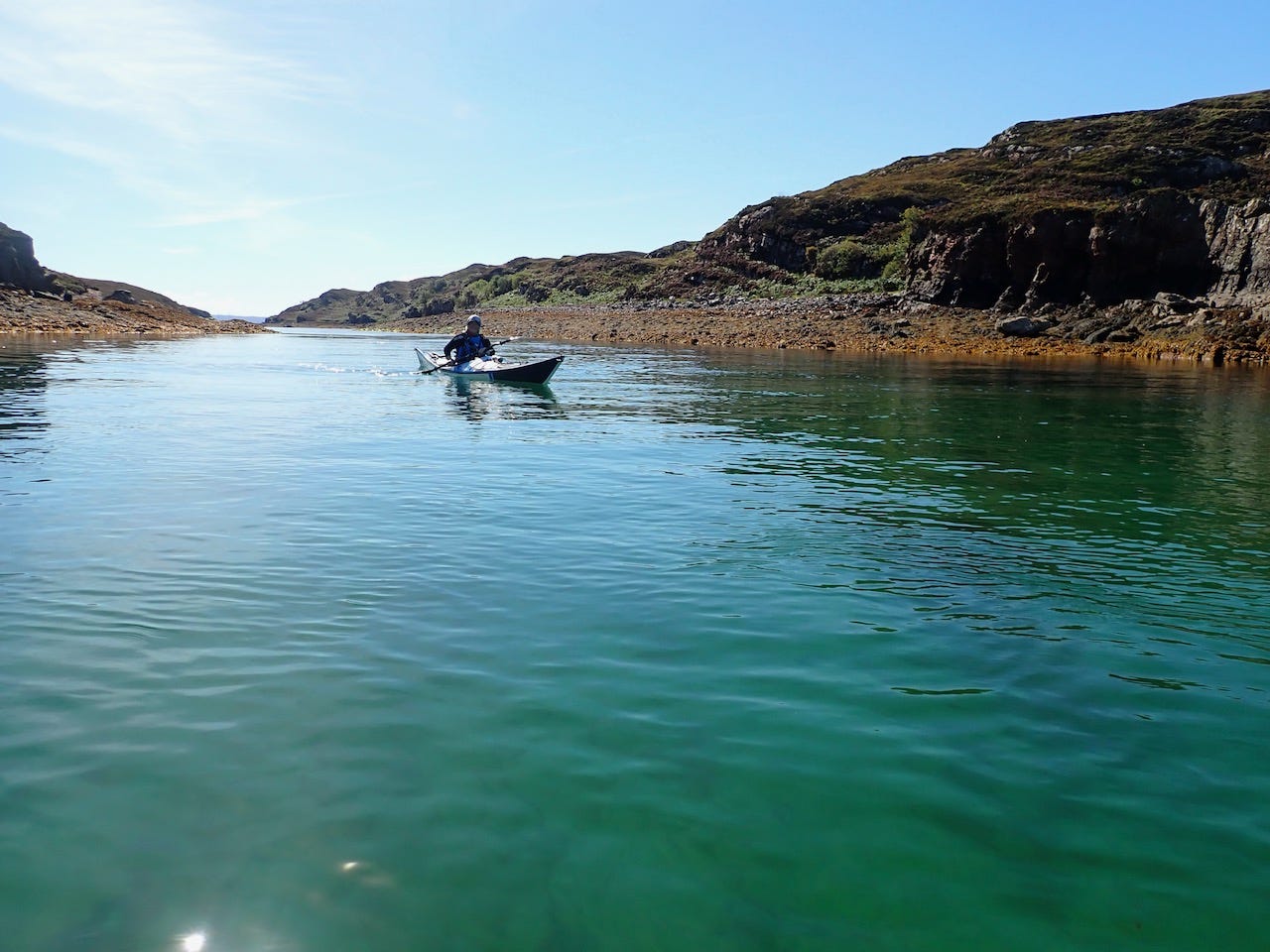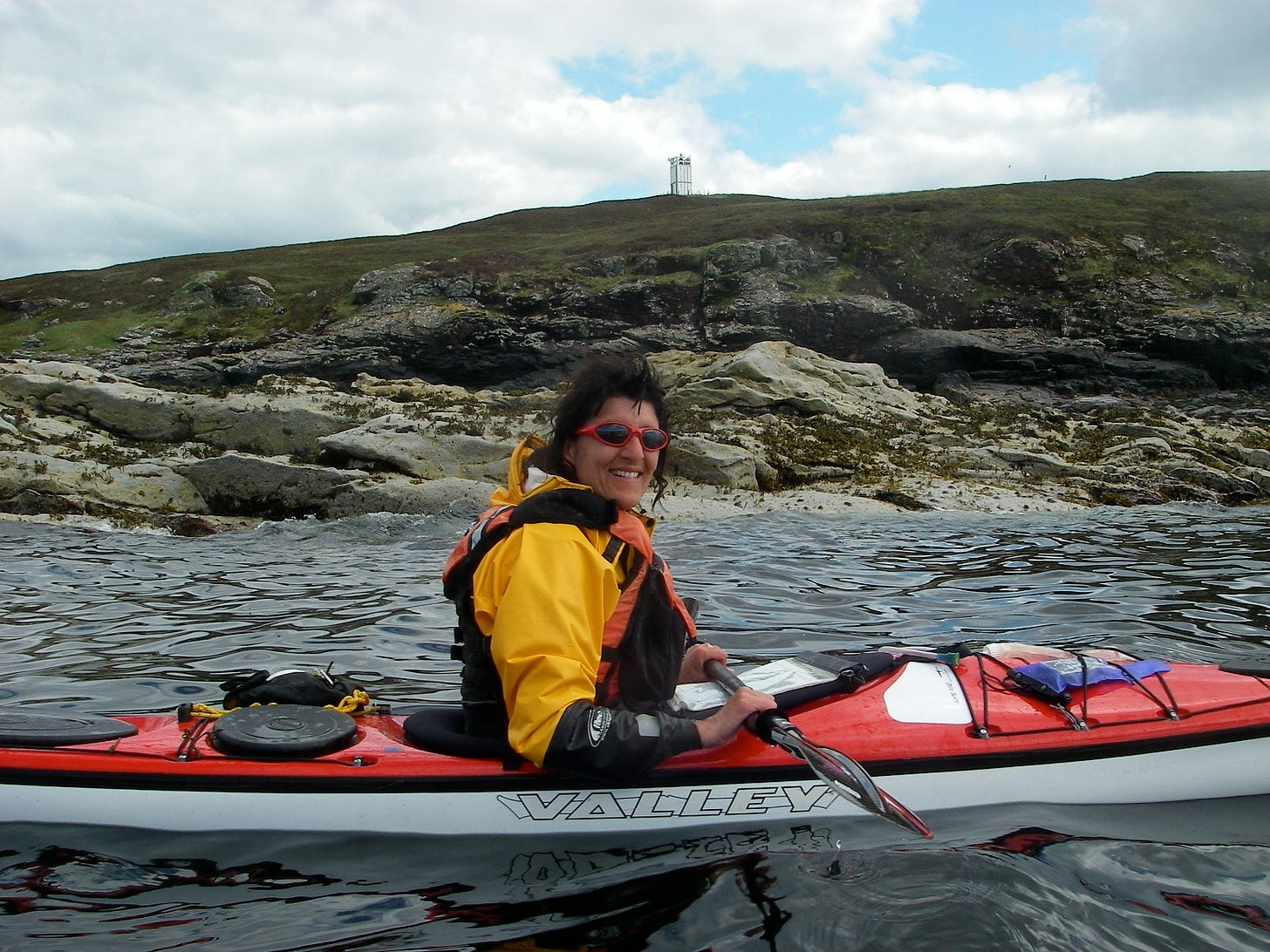Islands hold a special place in the hearts of sea kayakers, a magnetic force drawing us to them, encouraging us to circumnavigate them and in some cases keep a record of those we have visited. This attraction is not a modern phenomena, for thousands of years our ancestors have sought economic independence or religious tolerance in these isolated outposts.
Over the last few weeks we have paddled to a number of these remote havens but possibly the most interesting have been the Crowlin Islands, to the north of Skye and to the south of Applecross. We visited as part of the Kayak Festival, professionally organised by Sea Kayak Plockton. Saturday was skills focussed but the weather was amazing, blue skies and a light easterly breeze. Perfect for a day trip from Plockton. With only slight pangs of guilt we missed the skills sessions and went paddling
This wasn’t my first visit. I had paddled out from Broadford, on a day trip from the Scottish Sea Kayak Symposium in 2007. We landed on the small east facing beach, close to the remains of the abandoned settlement.
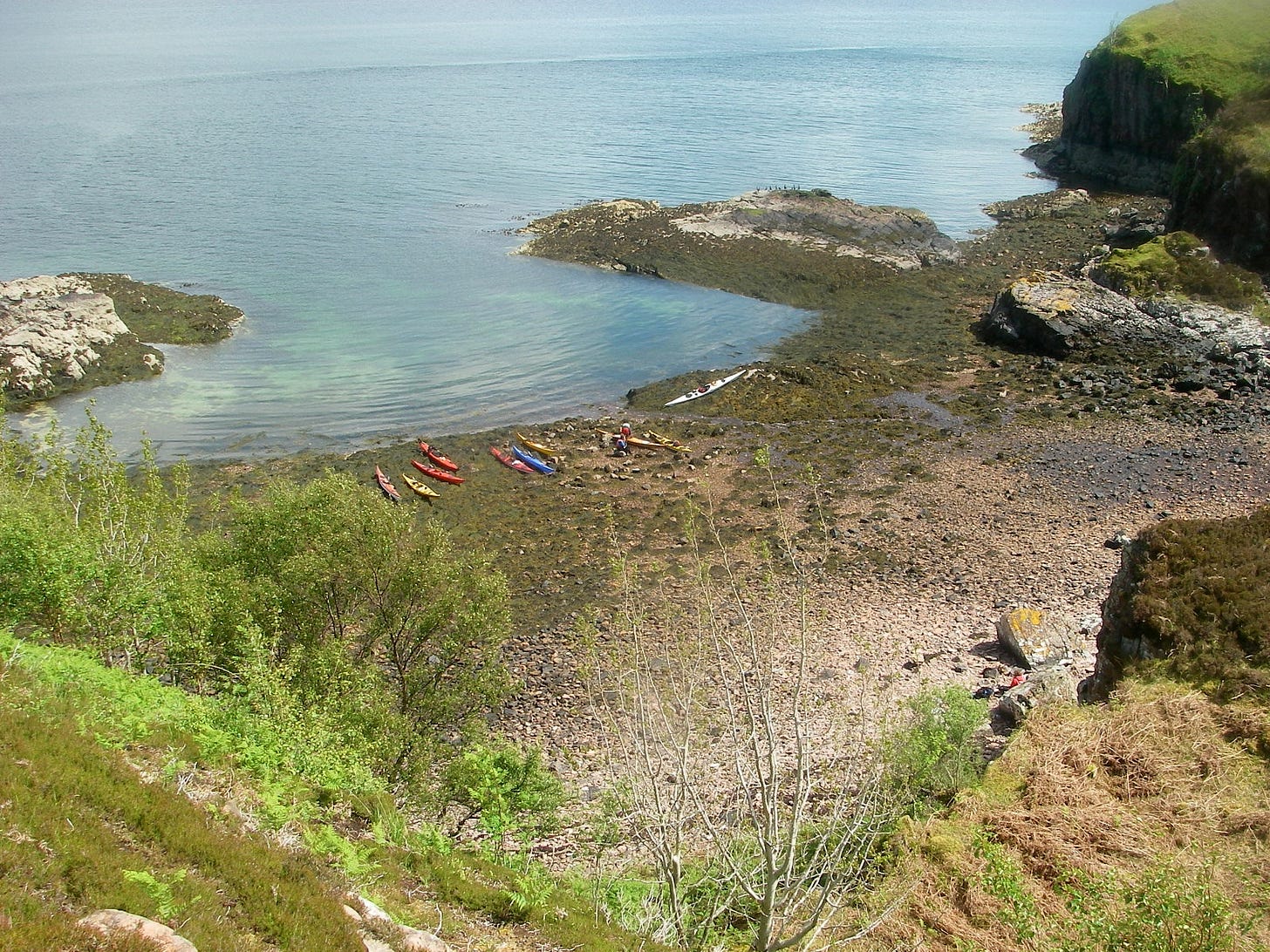
A number of families had been allowed to settle here, from 1810 onwards, following eviction from farming lands on Applecross, they didn’t want to be resettled thousands of miles away. Eking out a living from fishing, sheep rearing, farming and gathering kelp, life must have been a constant challenge. The islands were finally abandoned in 1920.
This initial visit had stimulated my interest in this small archipelago, so easily seen from the road running from the Skye Bridge to Broadford. My next visit was whilst working for Gordon and Morag Brown at Skyak Adventures. I was offered the chance to lead a group on an overnight trip, camping somewhere suitable.
We left Broadford in perfect conditions, with an ideal forecast for the next few days. The crossing was quicker than anticipated and soon we were basking in the warmth of the August sunshine at the northern end of the channel, which splits the two main islands. Most of the group settled in for a relaxing afternoon whilst myself and one other person decided to circumnavigate the islands, so that we could identify the ideal camping spot. As we returned to the group the relaxed atmosphere had disappeared, with concerned faces from those on the shore.
A yacht, which had been at anchor was heading out but prior to leaving they had been kind enough to head over to the group and inform them that the forecast had changed significantly, with a SW force 9 imminent. Call me cautious but that is not the weather I wanted to be caught out in on the Crowlins. This was before the arrival of smart phones, so a personal check of the forecast wasn’t possible. I called a few people until I found somebody sitting next to a computer who was able to verify the forecast. Chris Jones was that person and as soon as I had confirmation it was time to plan our retreat to more sheltered waters. To this day I have not had the opportunity to spend a night on the islands.
I came very close a few years later when I paddled out, towards the end of one October. The weather was awful, torrential rain, which was forecast to last for the best part of 4 days. So after lunch we took the sensible decision to retreat to Uags bothy, providing a dry refuge just over a mile away. We did visit the islands once in a lull in the strong winds in search of drift wood but were so grateful for the shelter provided by the basic stone cottage. As soon as I returned home a donation was sent to the Mountain Bothies Association and I remain a member to this day. Joining is sensible advice for anybody planning on venturing into the wilder areas of Scotland, with a few huts also available in England and Wales.
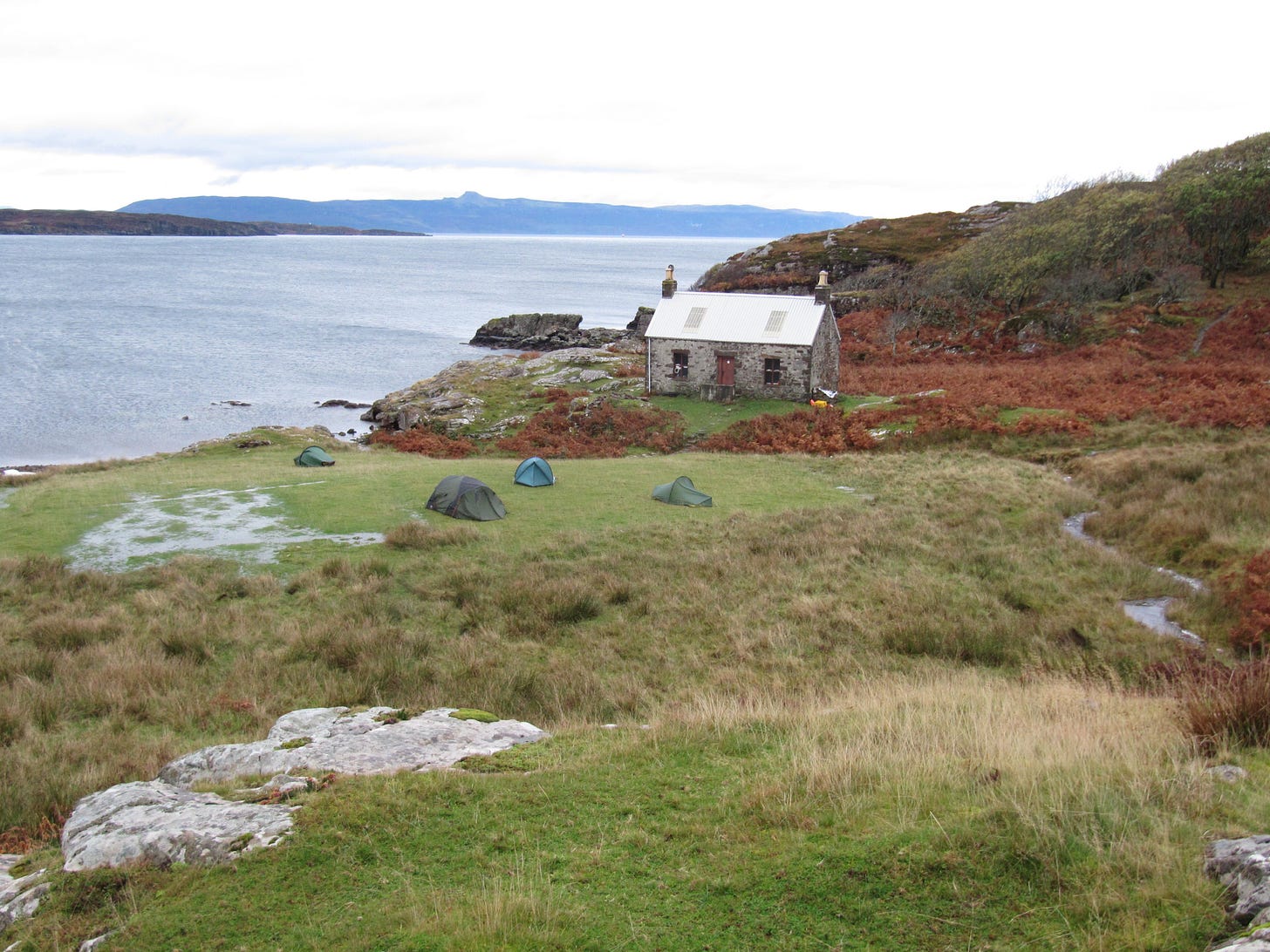
Our visit in September was in perfect conditions, the slight easterly breeze pushed us west along Loch Carron at about 4.5 knots, without too much effort. We circumnavigated the small archipelago in a clockwise direction, unfortunately taking a White Tailed Eagle by surprise as it sat on the rocks close to the southern tip. These magnificent birds of prey, are the 4th largest eagle in the world, with more than 150 pairs in Scotland. They have become an integral part of the sea kayaking landscape in NW Scotland, a real success story. We paddled on 10 days whilst on this visit to Scotland, seeing at least one of these huge raptors on 8 of the days.
The backdrop to our paddling was the dramatic peaks of Skye, not a single cloud interrupted the lines of the gabbro ridges to the west. To the east the Torridon sandstone, was the bedrock.
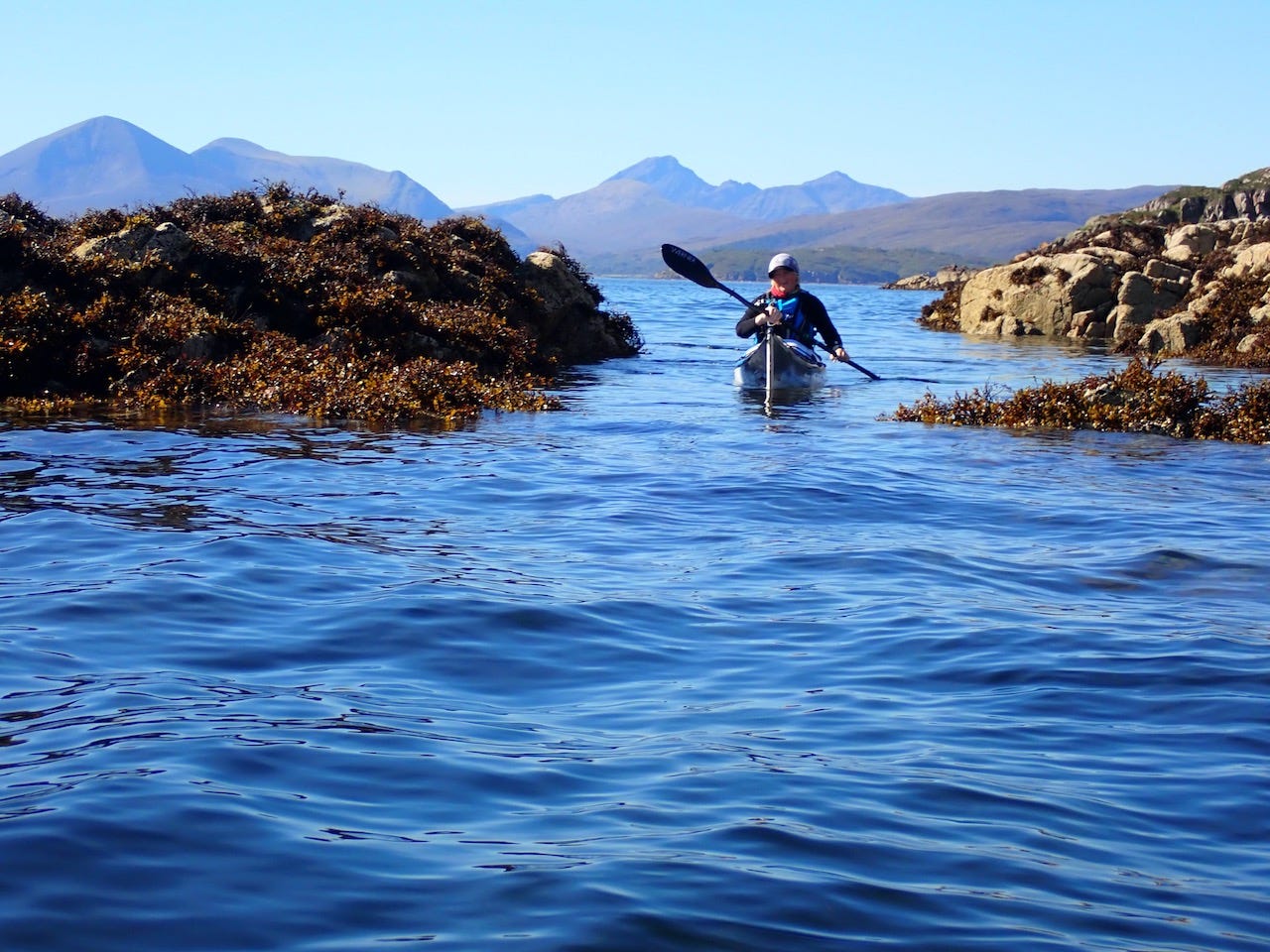
We had lunch on Eilean Mor, the 118th largest island off the coast of Scotland. We didn’t have time explore the remains of the small houses, which have stood empty since 1920 but we did have enough time to reflect on the difficulties of producing enough food to raise a family in such a harsh environment. As sea kayakers we travel across and through the landscape at a speed which encourages empathy with our forebears. Allowing us an intimacy with and understanding of the natural environment, perhaps missed by other seafarers.
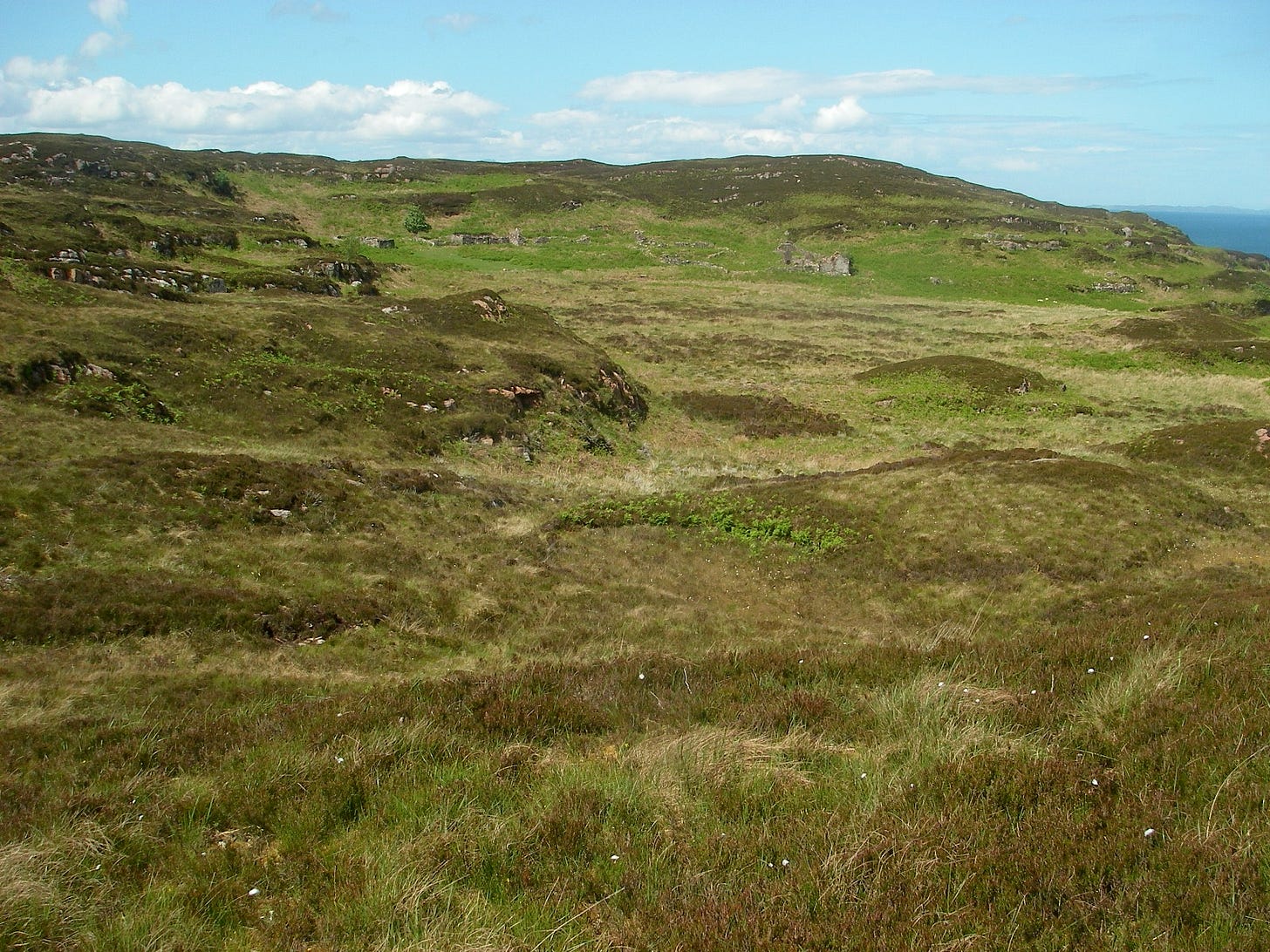
The displaced crofters from Applecross were not the first human inhabitants of these isles though. Archaeological investigation has revealed Mesolithic remains dating back 8,000 years. Scotland’s First Settlers was a large scale archaeological study of the Inner Sound from 1999 to 2004. On the Crowlin Islands they discovered 6 caves or rock shelters with evidence of prehistoric habitation. Perhaps I will be fortunate enough to return at some point in the future to spend a couple of days amongst these islands to explore them in greater detail.
For those whose outdoor interests lie on land and enjoy using the Hill Lists App, the highest point on Eilean Mor is Meall a Chois at 374 feet (114 metres). It makes an appearance as a HuMP, a SIB and a Tump. So a little extra effort will turn another pin on the Hill Lists map green, to signify a successful ascent.

The second largest of the island group is Eilean Meadhonach, the 166th largest island off Scotland by area. Separated from its larger easterly neighbour by a narrow gap, the southern entrance was dry the day we visited, but the northern entrance is the normal anchorage for visiting vessels. At certain stages of the tide it is relatively easy to land whilst at other times its a bit of a challenge. So we moved on.
The third island, and smallest of the Crowlin group is Eilean Beag. Not surprisingly this means “little island”. This is the location the Crowlin’s lighthouse, which I have been able to find very little about. Although if you were to buy a lighthouse from a well known Swedish furniture company, then I think that it would look rather like the one on the Crowlins.
From here we returned back to Plockton, the easterly wind had dropped completely so we were able to cruise straight down the centre of Loch Carron. A relatively early finish to our 18 nm day trip meant that we had plenty of time to prepare for the evening activities. A superb meal, an inspiring talk by Brian Wilson and Will Copestake, followed by a lively ceilidh, but that’s another story.
There are a number of possible departure points, Broadford, the Skye Bridge area, Plockton and Toscaig, near Applecross. All are enjoyable giving access to a fascinating archipelago. Tidal strams in the area are generally very weak, with a spring rate of 1 knot in Caoloas Mor, the channel between the Crowlin Islands and the mainland.
A visit to the Crowlin Islands is a memorable sea kayaking day out, especially if you are fortunate with the weather




